I'm trying to plot mean values for species although the mean values are all negative. I want the more smaller values (more negative) to be towards the bottom of the y axis with the larger values (less negative) to be higher up on the y axis.
I've tried changing coord_cartesian and ylim and neither work.
ggplot(meanWUE, aes(x = Species, y = mean, fill = Species)) +
coord_cartesian(ylim = c(-0.8, -0.7)) +
scale_fill_manual( values c("EUCCHR" = "darkolivegreen2","ESCCAL" = "darkgoldenrod2", "ARTCAL" = "darkcyan", "DEIFAS" = "darkred", "ENCCAL" = "darkorchid2", "SALMEL" = "deepskyblue1", "ERIFAS" = "blue3", "BRANIG" = "azure3", "PHAPAR"= "palevioletred" )) +
scale_y_reverse() +
geom_bar(position = position_dodge(), stat="identity") +
geom_errorbar(aes(ymin=mean-se, ymax=mean+se),width=.3) +
labs(x="Species", y="WUE")+
theme_bw() +
theme(panel.grid.major = element_blank(), legend.position = "none")
I want ESCCAL and EUCCHR to be the shortest bars essentially, but currently they're being shown as the tallest.
Species vs water use efficiency
If I don't do scale_y_reverse, I get a plot that looks like this second image


